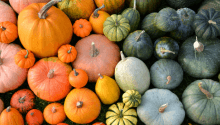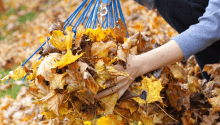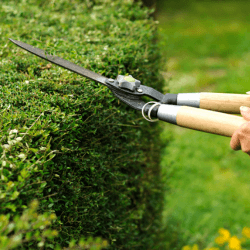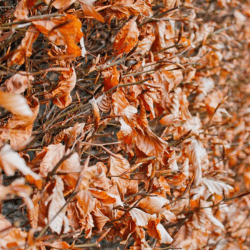
October Gardening Jobs
iWhat to Do in the Garden in October: Welcoming Autumn Into Your Space
Just when you think you can sit back and relax after a full-on gardening year ó autumn arrives!
Never mind, you can afford to kick back a little but there are plenty of October gardening jobs around the garden that will help set the stage for next year to ensure your outdoor space looks its best.
Autumn is the perfect time for a quick assessment and tidying up areas that have become a bit unruly, so letís kick off with how to carry out seasonal maintenance and what to do in the garden in October starting with trees, hedges, shrubs and perennials.
Contents
- Trees, hedges, and shrubs
- Flowers
- Garden maintenance
- Pests and diseases
Trees, hedges and shrubs
After fabulous foliage displays of fiery red, mellow yellows, bronze, simmering golds and vibrant oranges, autumn is a time of year when most deciduous trees and shrubs lose their leaves. Once they have shed leaves, they settle down for a long winterís nap conserving their energy so they can make fresh leaf buds next spring.
- Prune deciduous trees and shrubs
Youíll be pleased to learn that for the most part, deciduous trees and shrubs can be pretty much left to their own devices. Some trees are far too tall to make autumn pruning practical unless you hire a tree surgeon, so use your common sense and deal with branches that are at an easily accessible height.
Deciduous trees (those that lose their leaves in winter) and shrubs can be pruned lightly after flowering from May to October. If youíre an autumn pruner, donít leave it too late. October is an ideal time since the weather is usually still warm which means your plants wonít get any nasty shocks from sudden cold snaps.
Generally, shrubs are pruned to maintain their size and shape so they donít overtake your garden or swamp other plants. A light trim in September or October is generally enough to keep them in great shape.
When pruning evergreens or deciduous plants, begin by looking out for the three Dís: dead, damaged or diseased branches as youíll want to remove these.
A word to the wise, avoid pruning apricot, cherry, nectarines, peach and plums in autumn as they are pruned in July which boosts the amount of fruit, limits the size of the tree and helps prevent silver leaf disease.
How to prune deciduous trees - Using a sharp, clean pruning saw or loppers, cut out any material that is dead, shows signs of disease or is damaged. Youíll need a light touch to remove tree branches with a clean cut and avoid cutting branches flush with the trunk to discourage disease.
- Look for where a branch meets the trunk and make your cut leaving a collar of about 3-5 cm from the trunk.
- Remove any branches that are rubbing or crossed.
- Last chance to prune deciduous hedges
Jump in and seize the last chance to prune deciduous hedges. Itís easy to do and autumn pruning offers the added benefit of not disrupting nesting birds that are prevalent in spring. Beech and hornbeam benefit from a light haircut, donít be too radical. Using secateurs can give better results than hedge trimmers that may damage large-leaved hedging, causing unsightly, brown die-back. Why not jump over to our blog for more details on how to trim all kinds of hedges?
- Hedges usually produce new leaves in spring with a second modest spurt in late summer, so hedging only needs a light trim to remove this fresh growth from September to October to keep them looking tidy.
- To make a nice straight hedge, youíll need a string line tied between tall bamboo canes.
- Start at the top of the hedge and simply follow the string line (take care not to cut the string!) using a hedge trimmer or clean, sharp secateurs or shears.
- Make sure you cut the sides at right angles from the top for a smart finish.
- Be sure to clean up all the trimmings and add them to your leaf mould or compost heap.
- Trim evergreen hedges
Most evergreen hedges are pruned twice a year. In spring after new growth and another light haircut in summer. Cutting later in the year, and that includes autumn, results in a less dense, looser hedge.
Evergreen trees can look after themselves, and even though you may not know it, they naturally shed their leaves throughout the year. Most evergreen trees, hedges and shrubs need little or no pruning, save removing any dead, diseased or damaged stems and branches.
- Cut back perennials after theyíve flowered
Perennials are plants that come back year after year and die down naturally with the onset of colder weather. There are plenty that will flower through autumn and even into winter, think Fleabane (Erigeron), so enjoy their late flowering displays before carrying out any pruning. Always use clean, sharp secateurs to prevent disease.
- Simply cut stems back to just above ground level once flowering is over.
- Many gardeners like to leave some plants, especially grasses, to brown in the border where they can add a touch of structural magic to the winter landscape when tipped with frost.
- Alternatively, you may prefer to prune perennials in spring.
Can I prune lavender in October?
Some perennials, such as lavender, donít respond well to autumn pruning. Prune lavender after flowering by removing all spent stems with clean sharp secateurs or hedge trimmers.
When should you prune roses?
Climbing roses are normally pruned in late winter (December to February), however, any long whippy or straggly stems can be pruned in October to prevent them from rocking in strong winds. Whilst youíre about it, cut out any twisted, damaged, dead or diseased stems.
Single-flowering shrub roses should be pruned in August after flowering is over. Cut out any twisted, damaged, dead or diseased stems. Groundcover, patio and miniature roses are normally pruned in mid-February but if you live in the colder North, wait until March.
- Prepare the soil for planting bare roots
If youíre thinking about planting a bare-root hedge, autumn is the perfect time to do it. Usually, bare root hedging is planted from October through to February but avoid planting in icy, extremely cold, wet or windy conditions as plants might struggle to settle down or could be killed off by icy temperatures.
You can follow our step-by-step guide on the best way to plant a bare root hedge, but itís important to take time to prepare the soil properly to get your newly planted hedge off to a flying start. Naturally, youíll want to make sure the soil is weed-free and rake out any stones and have some fertiliser handy, or you can use homemade garden compost or organic matter handy to give them a boost.
- Take hardwood cuttings for propagation
Hardwood cuttings are a garden gift! They provide new plants for free, are one of the easiest cuttings to take and even newbie gardeners will be met with success the first time around. September and October are the best months to take hardwood cuttings, but wait until plants have lost all their leaves.
You can take hardwood cuttings from trees such as willow and deciduous shrubs including Dogwood, Forsythia, Flowering currants, Lavender, Mock orange, Roses and Viburnums to name but a few. Donít forget the climbers! Vines, Jasmine and Honeysuckle are all easy from hardwood cuttings.
- Water early-flowering shrubs if the weather is dry
It might seem crazy to think about watering shrubs at a time of year when rain is plentiful, but early flowering shrubs benefit from an extra boost to look their best come spring. Azaleas, Camellias and Rhododendrons all appreciate that extra care.
If youíre growing any of these gorgeous shrubs on clay or sandy soil, they tend to sulk, so youíll need to beef up the soil with special compost annually as they love nothing better than acid soil.
Flowers
Just because autumn has arrived doesnít mean you canít indulge in some floral fancies! Here are some fabulous ideas on what to plant in October when the weather is still warm and the soil still moist to allow new plants or seeds to get their roots down. Colourful Dogwood (both bare root and potted plants,) Firethorn, winter-flowering heather, Winter box, Skimmia and Viburnum all enjoy being planted in late autumn and provide enticing colour in all gardens great and small.
- Sow flower seeds
Donít miss out on the chance to boost your floral bounty with some of our favourite flower seeds to sow in October.
| Aquilegia | Many gardeners sow columbines in spring but they do well from autumn sowing too. Plant 2-3 seeds per 9 cm pot in fresh compost, lightly cover seeds with soil. Water lightly and label pots before placing them outside in a cold frame. (Grannyís bonnets need chilly temperatures to germinate.) | 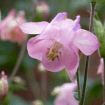 |
| Cornflowers | Cornflowers can be sown in spring or autumn and are super easy to grow from seed. Autumn-sown seed also makes bigger, bushier plants that flower earlier than spring-sown seed so thatís a very good reason to sow them now. Itís easy to do. Either sow them in the ground where you wish them to flower or in 9cm pots filled with a good compost. Ground-sowing: Sprinkle seeds on raked, weed-free soil and cover them very lightly with soil as if youíre dusting a cake with icing sugar. Itís best to label the area so you donít dig them up by mistake. If youíve sown too many, you can easily thin them out in spring. For pot-grown seeds, a tiny pinch of seed per pot is enough. Label the pot, water well and leave in a cold frame or cool greenhouse to plant out in spring. |  |
| Californian Poppies | Everybody loves the jewelled colours of California poppies. Sowing poppy seeds in September will give you gorgeous plants the following spring. Rake your garden soil, removing any weeds or stones before scattering a pinch of seed lightly on the soi in wavy lines for an informal effect. Cover seeds lightly to exclude any light and water the area well. Seeds usually germinate within 3 weeks. |  |
| Sweet Peas | Sweet peas tops every gardenerís wish list for their delightful flowers and fragrance. And the good news is you can sow seeds as late as November. For best results Ďnickí the seed case with a clean, sharp knife before planting three seeds in a 9cm pot using good quality compost. Water well and leave in a cold frame or cool greenhouse ready to plant out in May of the following year. | 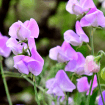 |
- Plant spring-flowering bulbs
Add floral layers to your flowering displays by planting spring flowering bulbs from September to October. For the most part, hardy bulbs only need a sunny spot with good drainage and are easy to grow and care for.
Begin by digging a hole wide and deep enough to take your chosen bulbs. A general rule of thumb is to plant bulbs 2-3 times their depth and space them a hand-span apart, always placing the pointed tip of the bulb facing upwards.
| Crocus | Spring-flowering Crocus bulbs can be planted from September to November so you can plant them along with your tulips. You can naturalise them in grass, grow them in beds or even containers. As a rule of thumb, space bulbs about 8 cm apart and 12cm deep. Cover with soil or replace turf youíve removed if youíre going for a natural look in rough grass. Thereís no need to water after planting. |  |
| Daffodils | Spring-flowering daffs can be planted in October in pots, in garden beds and rough grass and bring a dash of cheer in the early months. Daffs like full sun or partial shade, well-drained soil and generally are planted to a depth three times their size. Plant them in odd numbers for a natural effect. |  |
| Hyacinths | Hyacinths are planted from September to November (an ideal opportunity to plant them alongside tulips). You can get away with planting them as late as December but expect them to flower later the following spring. Plant them in a sunny spot in well-drained soil, planting bulbs about 10 cm deep and 8 cm apart. Firm the soil down over them and water in dry weather. |  |
| Tulips | Tulips are a must for any self-respecting garden, providing eye-popping colour from March to May. Bulbs can be planted from September to November, three times their depth, spacing them about 5 cm apart in moist, well-drained soil in a sunny spot. |  |
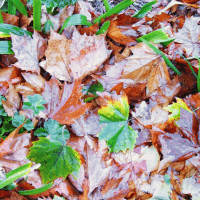
Garden maintenance
Did you know that you can burn 350-450 calories an hour raking and bagging up leaves? Thereís nothing like a bit of October garden housekeeping to keep you and your garden healthy, productive and happy.
- Reinforce tree ties and stakes
Autumn is an ideal time to stake newly planted trees or prop up older ones to protect them from rocking in fierce winter winds. Itís easily and quickly done and you can buy everything from rabbit guards to quality tree ties and stakes here at Hedges Direct.
- Continue to clear away dead leaves and debris
Some gardeners love the idea of clearing up fallen leaves and canít wait to start up the leaf blower! Raking up dead leaves and removing garden debris will help prevent diseases lurking through winter on rotting garden refuse, so roll up your sleeves and treat yourself to a garden workout.
- Harvest fruit from trees
Youíve put in all the hard work from spring to summer and thankfully, October is the perfect time to reward yourself by harvesting delicious, plump fruit. Now is the time for baking apple tarts and crumbles, making soft fruit preserves or even creating a cheeky evening cocktail garnished with blackberries.
- Cut back raspberry canes
Raspberry canes that have finished fruiting can be easily removed by cutting them away at ground level with clean, sharp secateurs.
- Sow grass seed
Can you sow grass seed in October? Some gardeners are spring seed-sowers, but youíll be pleased to hear if you didnít get around to it, October is a great time to sow grass seed. Thereís plenty of rain so you cut down on the watering, the soil is still warm, there are fewer weeds and foraging birds about and your new lawn will overwinter so itís ready for use when the warmer weather comes in spring.
- Apply autumn lawn fertiliser
Already got a perfect green lawn? Keep it looking that way by applying autumn lawn fertiliser. A healthy lawn lets the grass grow thick and lush and is less vulnerable to disease, moss invasion and weeds so itís worth making the extra effort.
- Empty and roll up hose pipes for storing
We know rolling up garden hoses can sometimes feel like doing a few rounds with an uncooperative boa constrictor! The truth is: water left in garden hoses can cause disease, so if they are rolled up nice and tight and put away during winter you wonít be watering your garden with nasties the following spring.
- Build a log pile habitat for sheltering wildlife
These days, most gardeners enjoy wildlife-friendly gardens. And not just because nature is fascinating. Encouraging wildlife in the garden helps keep your plants healthy and happy. Insects play an important part in tackling sap-sucking pests such as greenfly and blackfly come spring, while toads, frogs and birds all enjoy munching on your garden pests. If you think that just one frog can eat over 100 insects in one night and a single ladybird over 5000 aphids, itís easy to see why they should be an essential part of your natural pest control.
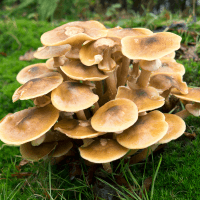
Pests and diseases
Although the main pest and disease season is usually over by autumn, there are one or two nasties to look out for. Donít worry most of them are easily treatable, so check out our tips on how to deal with some of the most common.
- Honey fungus
Honey fungus is a creamy-coloured parasitic fungus with a distinctive mushroom smell that can affect plant stems, roots and, as commonly, tree trunks. In all honesty, Honey fungus can be difficult to identify, but symptoms to look out for include sudden plant death, unusual wilting, stems dying back prematurely and in the case of trees, you might see black bootlaces threading through the soil at the base of the trunk.
Unfortunately, there are no effective cures and the bottom line is that affected plants should be dug up and removed.
- Grey mould
Often known as Botrytis, grey mould is a very common fungal disease that can affect just about any plant, usually those with soft growth. Vegetables, perennials, soft fruit and particularly greenhouse plants.
Luckily, if the fuzzy grey growth is spotted early enough, itís rarely serious and usually occurs in damp, humid conditions. The furry mould is easily visible and shrivels flowers, buds and damages soft fruit.
Again, there are no effective remedies so good old-fashioned plant husbandry is the key to dealing with it. Overcrowded plants are more likely to be affected, so make sure you give your plants plenty of room to grow so that good air circulation is guaranteed. Plants in the greenhouse are especially at risk so remember to allow plenty of ventilation.
- Powdery mildew
Powdery mildew is a very common fungal disease and again, affects a wide range of plants. The good news is that it may be unsightly, but rarely a killer.
Youíll notice a white/grey powdery film on leaves and in advanced cases, the whole plant can look like itís been dusted with flour.
Remove any areas affected and either burn the clipping or put them in the rubbish. Donít be tempted to add them to the compost heap or youíll just be spreading the disease.
Good garden centres offer effective sprays, but just as easily you can make a homemade recipe using baking soda. Mix 3 teaspoons of baking powder to 500ml of water, add a small drop of washing-up liquid, pour it into a container and spray as often as needed.
- Silver leaf
Another fungal disease that attacks stone fruit such as apples, apricots, cherries and plums is normally triggered by wet, mild weather.
You may notice the leaves turn silver and left untreated, it can kill off entire branches. The spores are produced in autumn and winter so the best way to avoid silver leaf is to prune fruit trees in summer in dry weather when wounds heal quickly and help prevent spores from spreading.
If you suspect your plants are affected, prune off a dead branch and dampen the cut end. If a purple or dark brown stain appears it means the tree has silver leaf. A word to the wise: quite often adverse cold or windy weather can make leaves silver, so if youíre unsure, cut off a small branch and if there is no dark staining, the tree is unaffected.
If youíre enjoying our October gardening tips, we have plenty more seasonal advice you might find useful ó so be sure to check out our monthly gardening series!
Show more >>>
Show less <<<


